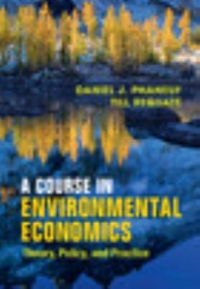The survey included a follow-on choice (double bound), whereby individuals responded to a second bid. The bid
Question:
The survey included a follow-on choice (double bound), whereby individuals responded to a second bid. The bid was lower if the first vote was “no,”
and higher if the first vote was “yes.” For the original bids B0 ∈ (24, 120, 216, 360), the following patterns were used:
B0=24: B1=120 if “yes,” B1=12 if “no”
B0=120: B1=216 if “yes,” B1=24 if “no”
B0=216: B1=360 if “yes,” B1=120 if “no”
B0=360: B1=480 if “yes,” B1=216 if “no”
(a) Using the Cameron model, estimate a bivariate probit model using the two choice outcomes and the two bid amounts, limiting your sample to version III respondents. Allow the coefficient estimates to differ across the two choices, and predict the median willingness to pay separately using the choice 1 and choice 2 findings. Comment on their similarities or differences, and discuss potential reasons for any discrepancies. Repeat the exercise for the other survey versions.
Do you find similar patterns?
(b) Return to the version III sample. Estimate the bivariate probit model again, but this time constrain the parameter estimates to be equal across the two choices.
Predict median willingness to pay from this model, and compare it to your findings from (a). Explain any differences. Repeat the exercise for the other survey versions. Do you find similar patterns?
Step by Step Answer:

A Course In Environmental Economics
ISBN: 9781316866818
1st Edition
Authors: Daniel J Phaneuf, Till Requate





